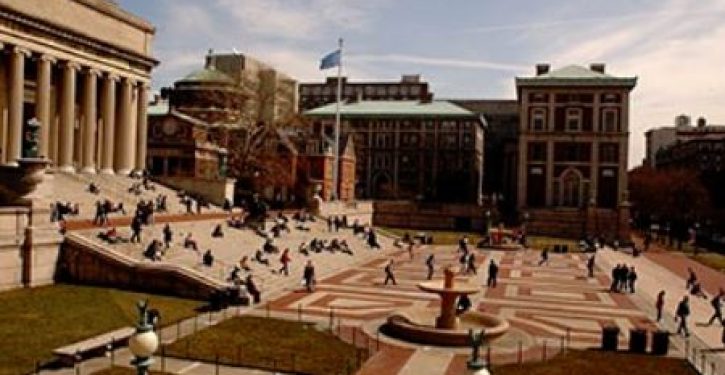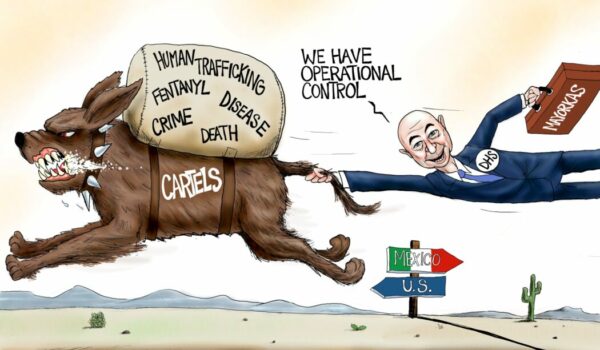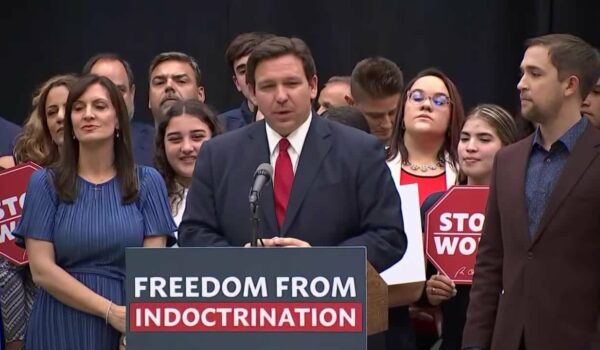
When the government lets students borrow more money in federal student loans, colleges raise tuition, and students as a whole don’t benefit. As John Arnold of Arnold Ventures notes, “Economists looked at what happened when the graduate school student loan program was expanded in 2006. The findings: – no increase in access – no improvement in outcomes – universities raised net prices $0.66 for every $1 of increase in student loans.”
At the American Enterprise Institute, Beth Akers describes the recent economic findings:
New research, authored by three economists, shows that the expansion of the federal graduate student loan program has caused costs of enrollment to rise and, at the same time, failed to expand opportunities for disadvantaged students to enroll in graduate or professional school. This paper provides an important contribution to the literature that examines a critical question in policy making on higher education: “Do subsidies to college cause the price to rise?”
The notion that subsidies cause prices to rise is consistent with economic theory which says that subsidies tend to raise market prices…(because sellers can charge higher prices at the same time that buyers are paying less.)… former Secretary of Education….William Bennett….argued that growth in financial aid dollars for students had enabled colleges to raise price…..
This new paper, by Sandra Black, Leslie Turner and Jeffrey Denning uses a clever approach to determine how the lifting of borrowing limits for graduate students with the creation of the Graduate PLUS program in 2006 affected prices of graduate and professional programs in the state of Texas (where they had access to the distinctive data set)….their methods mimicked the structure of the randomized controlled trial that I described above, by comparing price increases at programs of study that were more and less affected by the policy change. The method they used, which is widely accepted in social science research, yielded a result with clear implications for policy.
Based on their analysis, they conclude that the increases in available credit did in fact cause prices to rise—and hugely so. They estimate that every dollar-increase in federal student loan eligibility translated into a $0.64 increase in net price. This implies, that in the case of graduate programs, they are in fact “greedy” in the way that William Bennett accused them of being. And more importantly, that the colleges themselves—rather than the students—were capturing most of the tax-payer funded expansion of student aid.
That outcome might be palatable if the expansion of credit achieved other tangential goals, like expanding access to graduate programs for disadvantaged students. But the researchers also find that this is not the case. The additional grant aid that was distributed in response to the price increases “was not disproportionately provided to students who were Black, Hispanic, or from low-SES backgrounds.”
It is now graduate students, not undergraduates, “who are accruing the most onerous debt loads.” That’s because “the federal Grad Plus loan program has no fixed limit on how much grad students can borrow.” Its “no-limit loans make master’s degrees a gold mine for universities, which have expanded graduate-school offerings since Congress created Grad Plus in 2005.” As a result:
Highly selective universities have benefited from free-flowing federal loan money, and with demand for spots far exceeding supply, the schools have been able to raise tuition largely unchecked. … Universities, which receive their tuition up front, have an economic incentive to expand graduate degree programs and face no consequences if students can’t afford to pay the federal loans after they leave.
“Columbia and other wealthy universities steer master’s students to federal loans that can exceed $250,000. After graduation, many learn the debt is well beyond their means,” notes the Wall Street Journal.
The Journal reported on Columbia University’s Master of Fine Arts Film program, one of the worst examples, in an article titled “Financially Hobbled for Life: The Elite Master’s Degrees That Don’t Pay Off”:
Recent film program graduates of Columbia University who took out federal student loans had a median debt of $181,000.
Yet two years after earning their master’s degrees, half of the borrowers were making less than $30,000 a year.
The Columbia program offers the most extreme example of how elite universities in recent years have awarded thousands of master’s degrees that don’t provide graduates enough early career earnings to begin paying down their federal student loans. … Recent Columbia film alumni had the highest debt compared with earnings among graduates of any major university master’s program in the U.S.
Columbia is one of America’s most progressive universities, and one of the richest: “Its $11.3 billion endowment ranks it the nation’s eighth wealthiest private school.”
As Columbia graduate student James Stoteraux notes, “There were 55 students in my incoming class at Columbia’s MFA Film program. Only 4 of us ever managed to make a career out of it. And of those 4, one guy dropped out the first semester. Funny enough he’s the most successful one having co-directed Avengers Endgame.”
But as Ian Lamont of Lean Media observes in a tweet, “a graduate financing program enabled by Congress ~15 years ago basically lets Columbia charge whatever it wants and get paid up front. Students are on the hook for hundreds of thousands; if they can’t pay it off taxpayers are on the hook.”
Even students who can find jobs after graduating often dump much of their massive student-loan debt on taxpayers. Once out of school, the students enroll in an income-based repayment program, in which the federal government forgives all loans after 10 or 20 years. This “Pay as You Earn” program allows eligible student-loan borrowers to cap monthly payments at 10 percent of their discretionary income, and have their remaining federal student loans forgiven after 20 years — or just 10 years, if they go to work for the government.
Stoteraux describes how little he got for his tens of thousands of dollars in annual tuition at Columbia: “During my 2nd year I suspected that the school wasn’t providing a launching pad to a career — most of the instructors were struggling to establish a career themselves & many weren’t even much more experienced than their students. A 4th yr student taught our cinematography class.”
After getting their MFAs, his classmates, unable to find jobs as filmmakers, sometimes ended up “teaching … in MFA programs.” So the MFA programs became a never-ending cycle of failure, in which people who already have the useless MFA degree help transmit it to others who spend a fortune on the degree.
Columbia film students received little for their massive tuition. As Stoteraux explains,
The brass ring the program dangled was that your film could be chosen for the annual festival where, in theory, big-time agents would see it and maybe sign you. But it was cutthroat to even be selected for the festival. And tuition didn’t cover the cost to make those films. You were on your own to pay for them. … Students were going into debt to the tune of 100K to make films with the hope that they might maybe have a chance to be seen by a CAA agent.
Not having the money to make a film, I switched to writing. I teamed up with a friend to write a screenplay that we hoped could be our calling card. … Within a year, that script sold — not because of anything my fancy school did, but because randomly I met a producer’s assistant who offered to read it, liked it, & championed to his boss.
I was officially a working writer, but I was still 2 credits shy of getting my degree. I asked if there was possibly a way I could finish my degree while in LA starting my career. But Columbia was offended by the request and refused. So I dropped out within 2 credits of MFA.
After Stoteraux became successful, the MFA program wanted him to speak to its students. In exchange, he wanted Columbia to allow him to finish his degree. But the Chair of the MFA program would only do so if he provided a special favor to the Chair himself: “The Chair began pitching me his idea for a TV pilot. In excruciating scene-by-scene detail. … He made it pretty clear if I wanted my degree, I needed to help him sell his tv pilot. Yep, the Chair of Columbia’s prestigious graduate film program tried to shake me down in order to jump-start his own stalled out career. … I still don’t have my MFA. That Chair is no longer the Chair, but still teaching there. And to my knowledge, they never sold their pilot.”
Even at the undergraduate level, federal student loans have negative side effects, such as tuition increases. Each additional dollar in federal financial aid causes a tuition hike of about 65 cents, according to the Federal Reserve Bank of New York.



